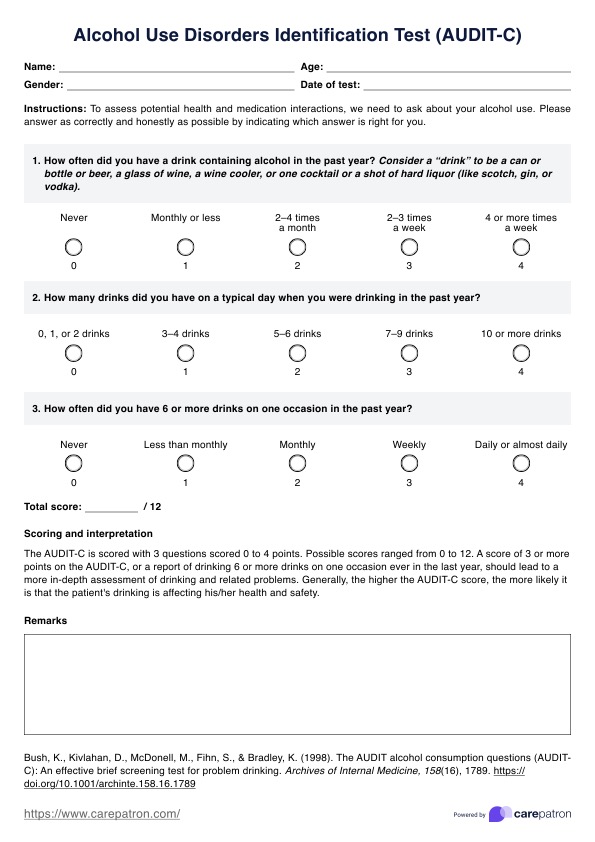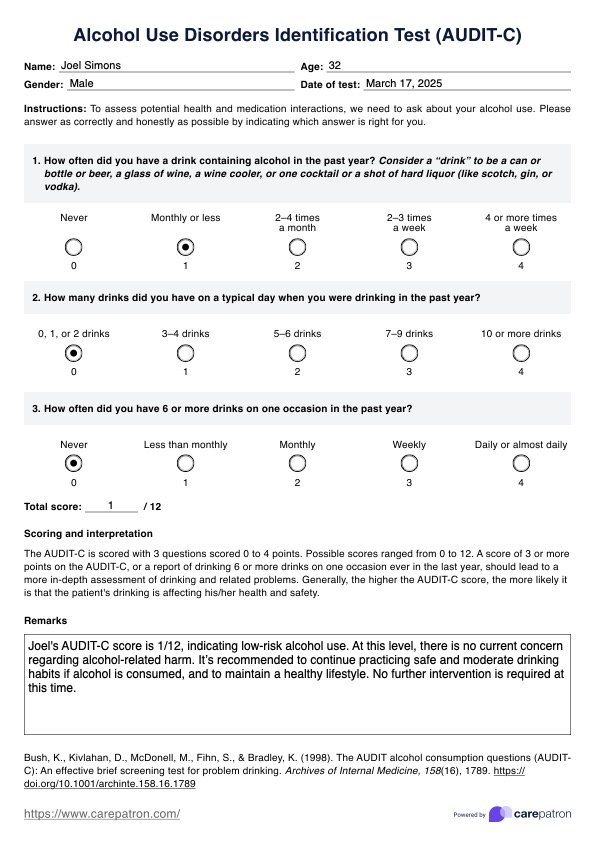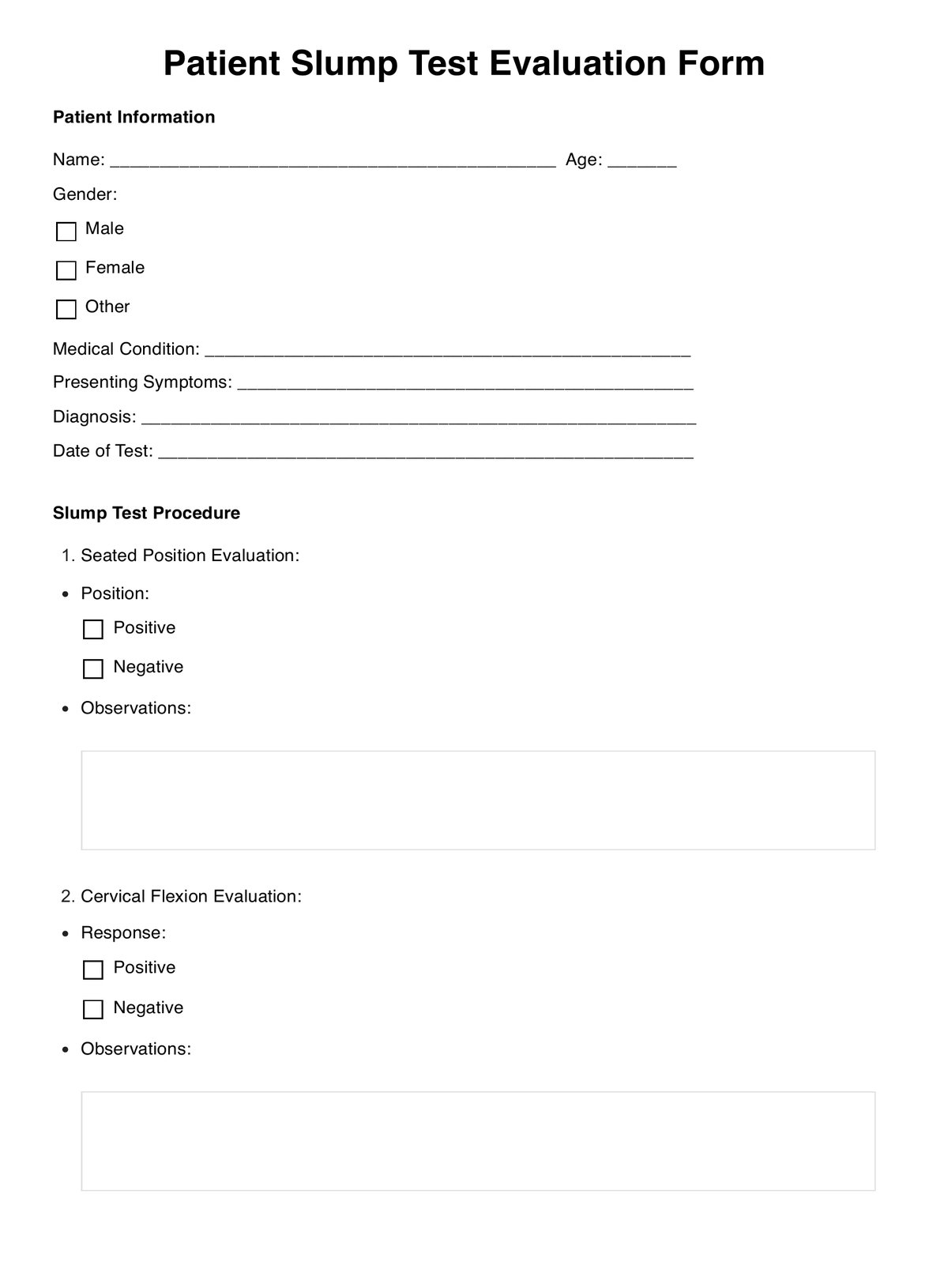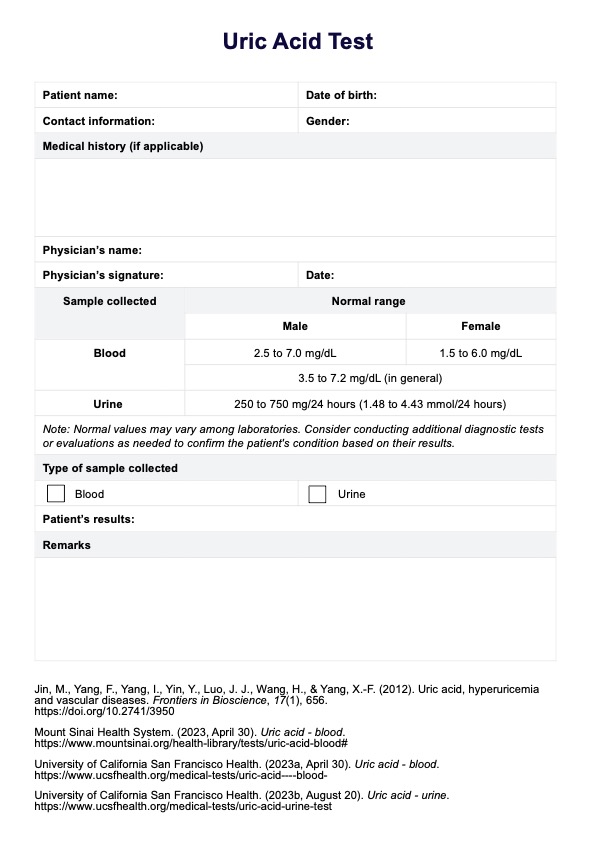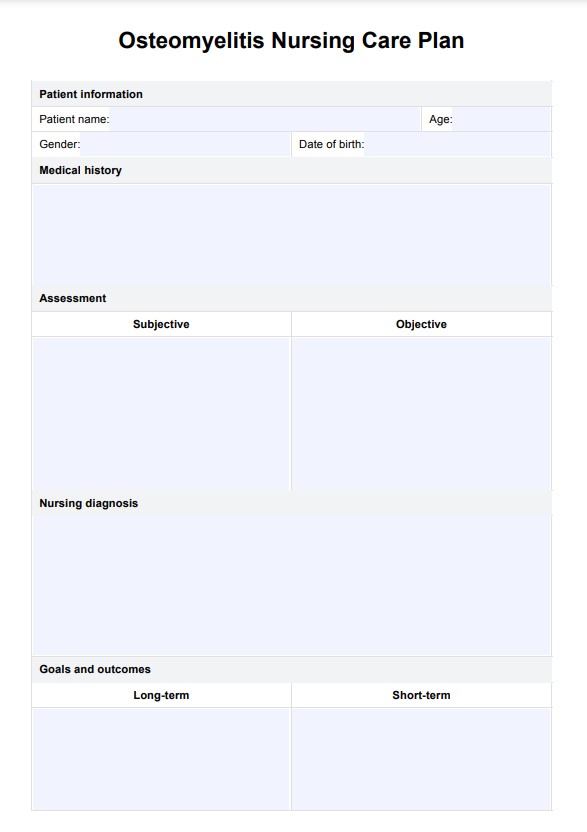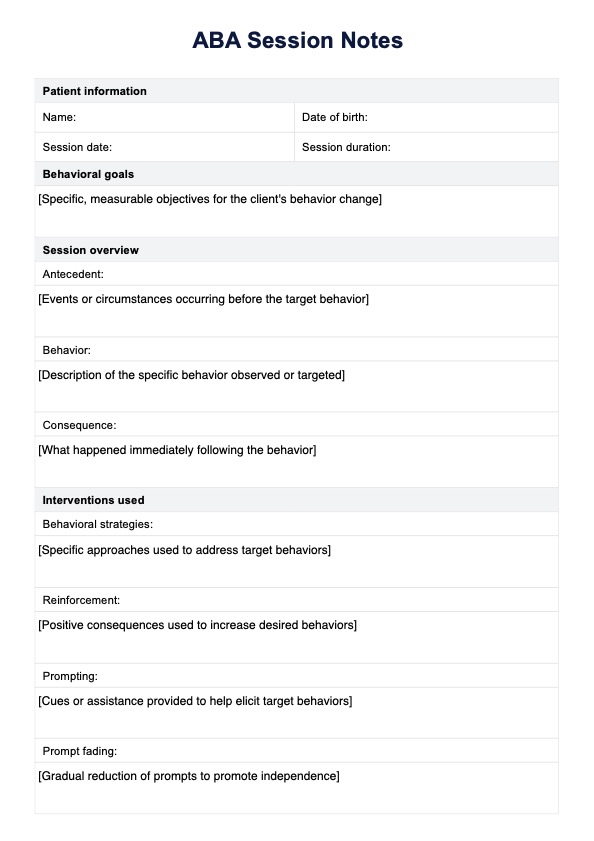AUDIT-C
Access the AUDIT-C screening tool to assess alcohol use and identify risky drinking among individuals quickly. Incorporate this test in your practice today!


What is AUDIT-C?
Drinking alcohol is a common part of life, so much so that we even have the term social drinking. Social drinkers typically consume alcohol to unwind, connect with others, or celebrate, but they do so in moderation and infrequently. However, when drinking becomes excessive or frequent, it can pose serious risks and lead to alcohol-related disorders. Global data from 2019 reveals that approximately 400 million people aged 15 and older struggle with alcohol use disorders, while 209 million live with alcohol dependence (World Health Organization, 2024).
Given these alarming statistics, the importance of early alcohol screening cannot be overlooked. Catching problematic drinking behaviors early can help healthcare professionals provide timely support and intervention. One of the efficient screening tools for this is AUDIT-C.
Short for Alcohol Use Disorders Identification Test-Consumption, this three-question assessment is a modified version of the 10-item AUDIT, which was initially developed by WHO as an easy-to-use tool for identifying excessive drinking and supporting brief assessments. Since AUDIT-C’s questions serve as a practical and reliable first-step screening tool for detecting heavy drinking and alcohol dependence, it has become crucial for identifying hazardous drinkers and individuals at risk for alcohol use disorders (Bush et al., 1998).
AUDIT-C Template
AUDIT-C Example
How does this AUDIT-C screening test work?
The Alcohol Use Disorders Identification Test (AUDIT-C) is a straightforward tool designed to help you assess alcohol-related risks. By following these four steps, you can efficiently use this effective brief screening test to assess and address unhealthy alcohol use:
Step 1: Download the template
Open the test via the Carepatron app by clicking the "Use template" button. This lets you customize the form based on your needs. You can also download a PDF version by choosing "Download." The form provides a convenient way to assess alcohol consumption and detect patterns of risky drinking.
Step 2: Let the patient answer the three questions
The template includes three AUDIT alcohol consumption questions that assess drinking habits, including how many drinks a person typically has and how often they consume alcohol. One key question identifies if they have had six or more drinks in one sitting, which can indicate hazardous drinking. Encourage honest responses to get an accurate assessment.
Step 3: Calculate the total score
Each response is assigned a score from 0 to 4. Add up the numbers for a total score out of 12. A higher score suggests a greater likelihood of unhealthy alcohol use. Moreover, a report of heavy drinking episodes may indicate hazardous drinkers who require further assessment.
Step 4: Interpret the results and take action
Based on the total score, determine if the patient shows signs of alcohol abuse or active alcohol use disorders. If the score suggests potential concerns, consider additional alcohol screening tests or refer the patient for further evaluation. Addressing these concerns early can prevent complications related to active alcohol dependence.
When would you use an AUDIT-C questionnaire?
There are times when a quick alcohol screening can make a big difference in identifying potential drinking problems. Here are three key situations where it’s especially useful.
During routine health check-ups
You can use the AUDIT-C questionnaire during annual check-ups or primary care visits to screen for unhealthy alcohol use. Since drinking habits can change over time, regular screening helps catch early signs of risky drinking before they become more serious. This allows for timely advice or intervention if needed.
When a patient shows signs of alcohol-related health issues
If a patient comes in with high blood pressure, liver problems, or mood changes, an AUDIT-C screening test can help determine whether alcohol consumption is contributing to their symptoms. Since alcohol can affect both physical and mental health, identifying hazardous drinking early can guide better treatment.
Before prescribing medications that interact with alcohol
Certain medications, like those for anxiety, depression, or chronic pain, can have dangerous interactions with alcohol. Before prescribing, you may use AUDIT-C to check for active alcohol use disorders or risky drinking habits. This ensures the patient gets the safest and most effective treatment plan.
Benefits of using the AUDIT-C template
Using the AUDIT-C template makes alcohol screening fast, simple, and effective for healthcare professionals like you. Here’s why this tool is worth using in your practice:
Fast and simple screening
The AUDIT-C questionnaire has just three quick questions, making it easy to assess alcohol use in less than two minutes. Patients can complete it quickly, and you can review the results on the spot, making it perfect for routine check-ups or when time is limited.
It saves you time
Instead of asking detailed, time-consuming questions about alcohol consumption, you get a clear view of a patient’s drinking habits with minimal effort. It allows you to spot red flags instantly and decide whether further assessment is needed. This lets you focus more on patient care and meaningful conversations rather than lengthy data collection.
It is available in print and digital formats
Whether you prefer paper-based screening or integrating it into electronic health records (EHRs), the AUDIT-C template fits seamlessly into your workflow. You can print copies for in-person visits or use digital versions for remote assessments or telehealth check-ins. This flexibility ensures that screening for unhealthy alcohol use remains accessible and convenient in any setting.
References
Bush, K., Kivlahan, D., McDonell, M., Fihn, S., & Bradley, K. (1998). The AUDIT alcohol consumption questions (AUDIT-C): An effective brief screening test for problem drinking. Archives of Internal Medicine, 158(16), 1789. https://doi.org/10.1001/archinte.158.16.1789
World Health Organization. (2024, June 28). Alcohol. https://www.who.int/news-room/fact-sheets/detail/alcohol
Commonly asked questions
AUDIT-C is a quick and effective brief screening test that usually takes less than two minutes to complete. Since it only has three questions about alcohol consumption and risky drinking habits, patients can answer it easily, and healthcare professionals can score it quickly.
AUDIT-C is a short alcohol screening test used to check for unhealthy alcohol use and alcohol use disorders. It helps healthcare professionals quickly identify people who may need further assessment or support for their drinking habits.
AUDIT-C has three questions that assess alcohol consumption, including how many drinks a person has, how often they drink, and if they engage in hazardous drinking, like having six or more drinks in one sitting.


